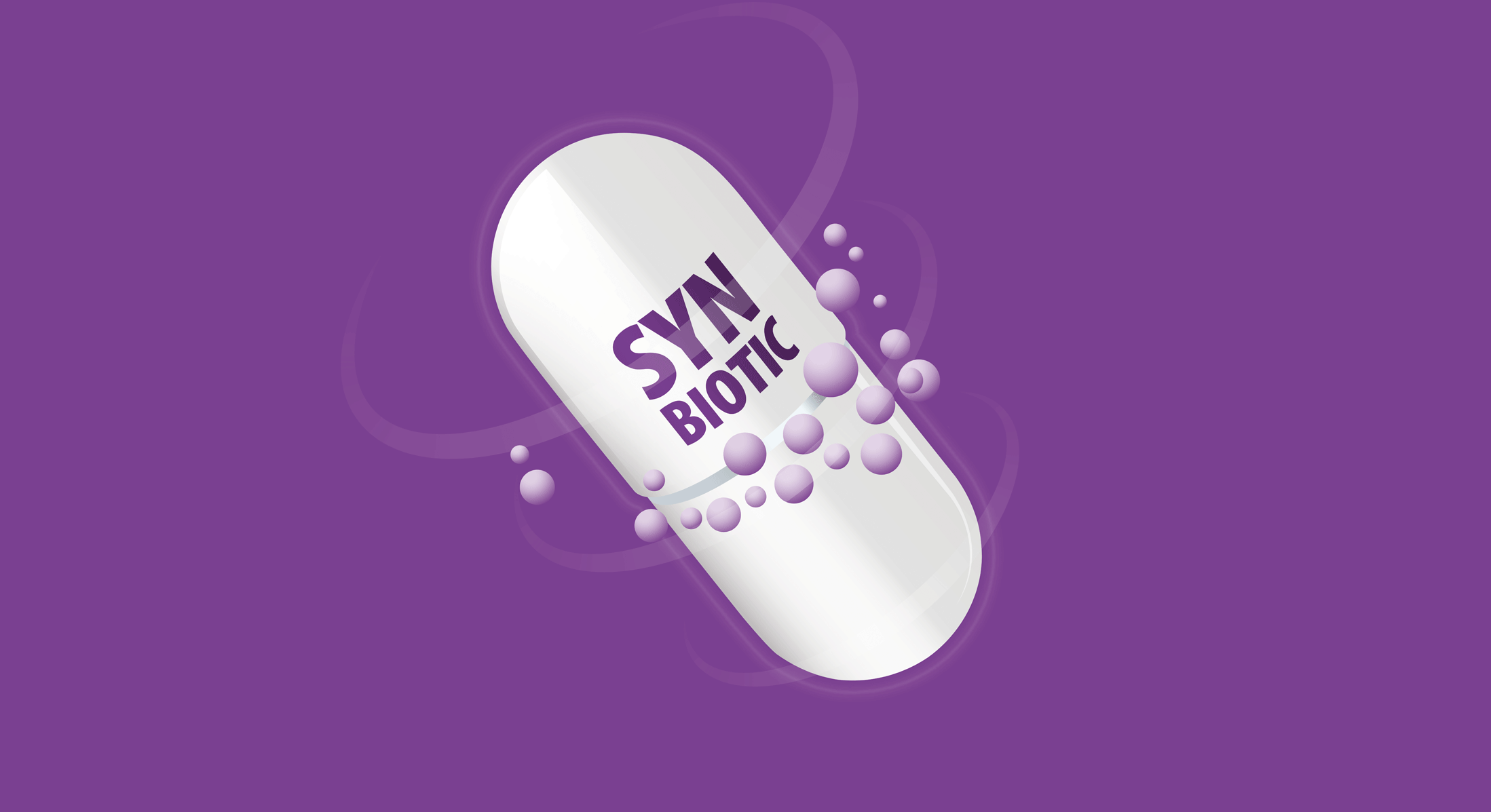A history of synbiotics
The idea that a combination of both prebiotics and probiotics, then defined as synbiotics, can confer health benefits dates back to 1995. Later, in 2011, it was proposed that synbiotics could be designed in one of two ways, either as a complementary or synergistic synbiotic.
Since then, the field has advanced, including preclinical and clinical studies supporting the role of synbiotics in health and disease states.
In the light of the growing body of evidence for synbiotics, the existing definition of a synbiotic as a product composed of both prebiotics and probiotics imposed an undue limitation to the concept, and a new view of synbiotics was needed.
A new definition and scope for synbiotics
A panel of experts in the field of microbiology, gastrointestinal physiology, immunology, food and nutritional science and metabolism met under the auspices of the International Scientific Association for Probiotics and Prebiotics (ISAPP) in May 2019 to update the definition of synbiotics. The outcome of this panel has now been published as a consensus statement in Nature Reviews Gastroenterology & Hepatology.
The panel updated the new definition of a synbiotic (sometimes incorrectly referred to as ‘symbiotic’) as “a mixture comprising live microorganisms and substrate(s) selectively utilized by host microorganisms that confers a health benefit on the host”.
Microorganisms that must be targeted by the prebiotic can include either members of the individual gut microbiota or microorganisms co-administered in the synbiotic.
The panel also defined two subsets of synbiotics: complementary and synergistic.
- A ‘complementary synbiotic’ (this is indeed the original definition of a synbiotic) consists of a probiotic combined with a prebiotic that target the host microbiota (each component works independently to achieve one or more health benefits and must meet the minimum criteria for a probiotic or a prebiotic).
- A ‘synergistic synbiotic’ is designed so that the substrate is selectively utilized by the co-administered live microorganism(s) (each component does not necessarily meet criteria for a probiotic or a prebiotic, as long as the synbiotic itself has health benefits).
Target areas of the host and considerations for study design
Another new aspect of the definition of synbiotics is that it is focused not only on humans, but also on companion or agricultural animals. The health properties of a synbiotic can also be reported within a specific population in the target host (e.g., healthy humans at different developmental stages). Beyond the intestinal microbial ecosystem, a synbiotic can also be applied to any part of the human body colonized by microorganisms (e.g. skin) in the form of foods, non-foods, nutritional supplements or drugs.
The beneficial effect(s) of a synbiotic on health must be confirmed in the target host, which has implications when studying the efficacy of synergistic synbiotics versus complementary synbiotics. For synergistic synbiotics, evidence of selective utilization of the substrate and a health benefit should be demonstrated in the same study. In contrast, in complementary synbiotics, the selective utilization of the prebiotic has already been established so the synbiotic only needs to show a health benefit of the combined ingredients.
In both cases, the probiotic and the prebiotic in the synbiotic should be appropriately characterized, safety must be established for the intended use, and the active ingredients must be sufficiently stable.
A challenge in the field includes the demonstration of both the selective utilization of the substrate by microbes and health benefits; not all clinical trials allow for disentangling synbiotics’ mechanisms of action. In addition, the biomarkers or symptoms used to assess the one or more health benefits of a particular synbiotic need to be validated.
Evidence in humans supporting the use of synbiotics
Dose, duration and composition of a synbiotic shape their final potential for efficacy, together with external and internal factors including host diet, medication use and genetic background. Many different combinations of live microorganisms and selectively utilized substrates could qualify as synbiotics as long as there is evidence in human studies supporting their health benefits.
Blinded, randomized, controlled trials have shown orally administered complementary synbiotics can aid in the following:
- Prevention of surgical infections.
- Treatment of non-alcoholic fatty liver disease.
- Prevention of sepsis in infants.
- Treatment of metabolic syndrome.
- Treatment of type 2 diabetes mellitus.
- Treatment of dyslipidemia.
- Treatment of inflammation.
- Treatment of irritable bowel syndrome.
- Eradication of Helicobacter pylori.
- Treatment of polycystic ovarian syndrome.
- Treatment of chronic kidney disease.
- Prevention and treatment of atopic dermatitis.
References:
Gibson GR, Roberfroid MB. Dietary modulation of the human colonic microbiota: introducing the concept of prebiotics. J Nutr. 1995; 125(6):1401-12. doi: 10.1093/jn/125.6.1401.
Kolida S, Gibson GR. Synbiotics in health and disease. Annu Rev Food Sci Technol. 2011; 2:373-93. doi: 10.1146/annurev-food-022510-133739.
Swanson KS, Gibson GR, Hutkins R, et al. The International Scientific Association for Probiotics and Prebiotics (ISAPP) consensus statement on the definition and scope of synbiotics. Nat Rev Gastroenterol Hepatol. 2020. doi: 10.1038/s41575-020-0344-2.


